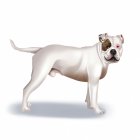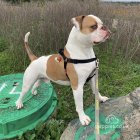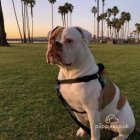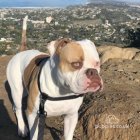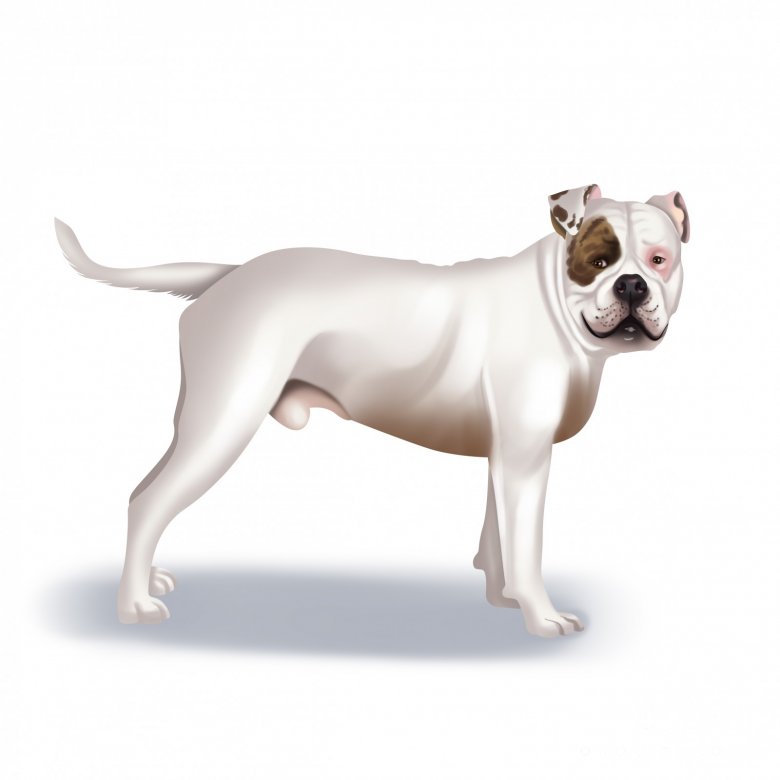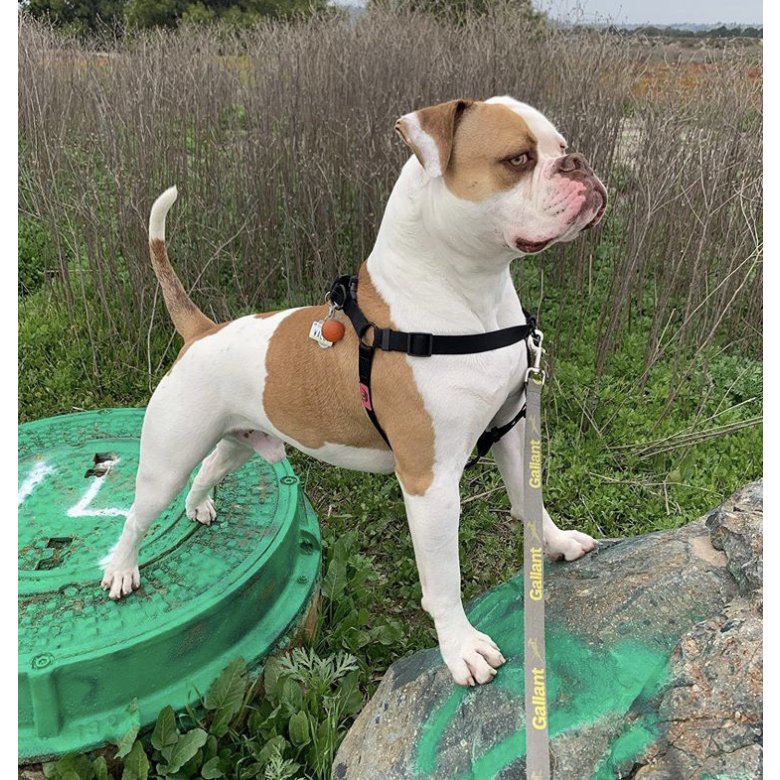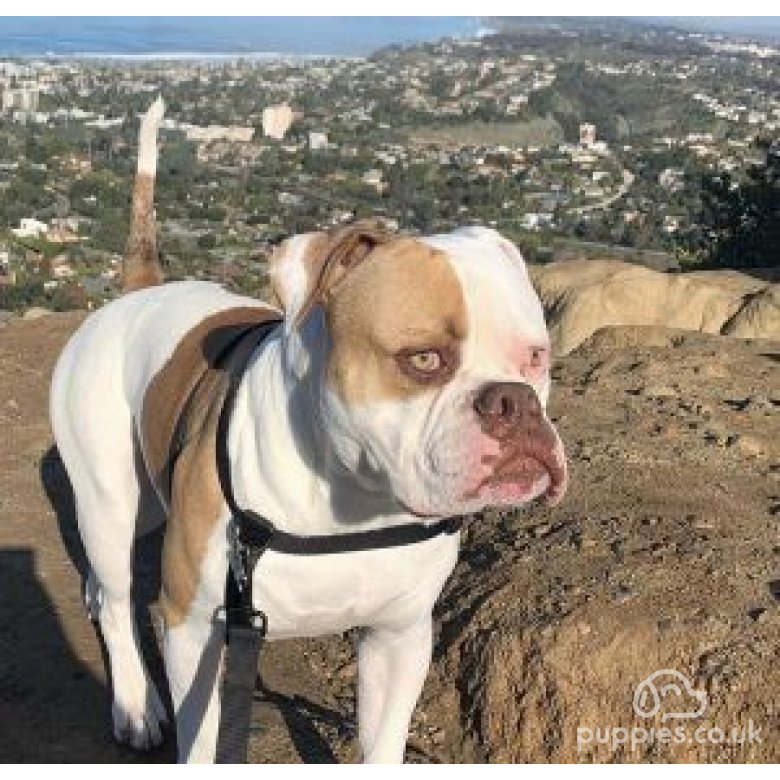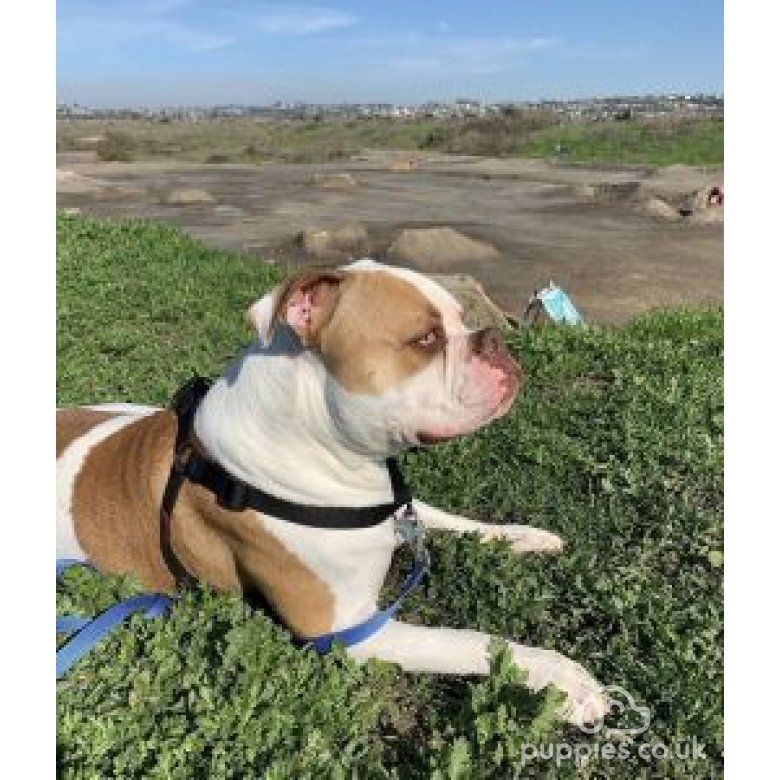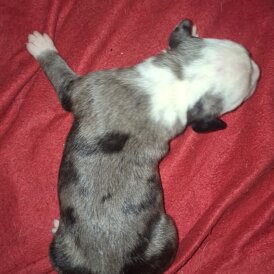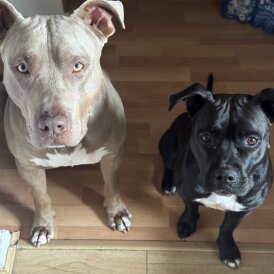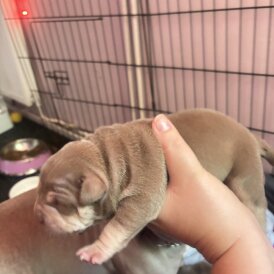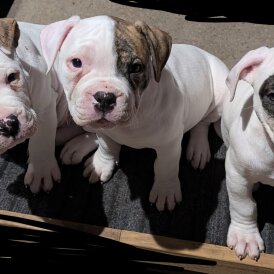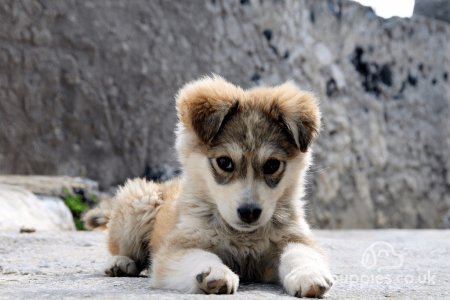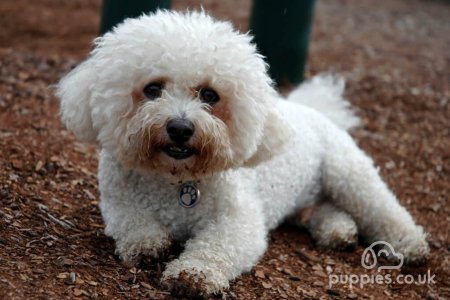American Bulldog Puppies and Buying Advice
If the English Bulldog is a longstanding cultural icon of Britain, the American Bulldog is certainly the quintessential American dog breed. While it may not rank amongst the top three - apple pie, baseball, and the Constitution - the American Bulldog takes first place in the hearts of its owners due to its loyal temperament and its ability to form a strong bond with owners and their families. As a descendant from the now-extinct Old English Bulldog, this utility guard dog breed seems to have fallen off in terms of popularity despite its great qualities. This makes American Bulldog puppies an ideal choice for a rarer breed of puppy to own that’ll stand out for the pack for all the right reasons. This breed is not recognised by the Kennel Club of Great Britain, but many American kennel clubs such as the American Bulldog Association and the All American Bulldog Club recognise this specific breed.
Why American Bulldogs are Great
Some highlights of American Bulldogs:
Affectionate: this breed is affectionate, loyal, and genuinely loving with owners and families alike.
Grooming: this breed requires a minimal amount of grooming.
Watchdog: American Bulldogs are amongst the best guard dogs since they’re territorial by nature.
Adaptable: this breed tends to handle changes in climate and environment quite well.
Wanderlust: American Bulldogs are less prone to wandering and escaping from home.
Things to Consider when Looking at American Bulldogs for Sale
Some downsides to the American Bulldog:
Allergies: this breed tends to trigger allergic reactions more than other breeds.
Drooling: if you’re looking for a puppy that won’t slobber too much, you may be disappointed as American Bulldogs tend to drool more than average.
Loneliness: this breed doesn’t much like being left alone and will be much happier when its owner or a family member is nearby.
First-time owners: although loyal, American Bulldogs can also be stubborn, making them a less ideal choice for first-time puppy owners.
History of the American Bulldog
The oldest known Bulldog ancestors to come to Britain were brought during the Norman Conquest nearly a millennium ago. Originally used as mastiffs for bull-baiting purposes, they were subsequently bred to be smaller in size. These Old English Bulldogs, as they were known, made their way to the American South and were used by farmers and ranchers for guarding and as work dogs. It’s uncertain how these Bulldogs were bred to become today’s American Bulldog breed since no records were kept pertaining to their breeding techniques. Early breeds were numerous since these farmers and ranchers tended to breed the best quality working farm dogs regardless of their background. Unfortunately, American Bulldog numbers were so low they were near extinction by the Second World War. Attempts were made by John D. Johnson and Alan Scott to increase their numbers and thus created the Standard American Bulldog breed. The second classification of the breed was also created by Johnson by mixing the Southern American Bulldog breeds with another English Bulldog from the American North, creating the Bully type of American Bulldog.
Appearance
This breed is recognisably stocky and robust-looking, with strong, muscular shoulders and chest. They have large heads with forward-pointing ears. Their fur is short, fine, and smooth (as puppies; fully-grown American Bulldogs may have harsher hair) with a few colour variations possible. White is traditionally the preferred colour, although pigmentation and patches of other colours are also common.
How big is the American Bulldog?
American Bulldogs are large-sized dogs. Males grow on average to 55-70 cm in height, whilst females can grow up to 52-65 cm high.
How heavy is an American Bulldog?
Fully-grown adult male American Bulldogs weigh between 32-54 kg on average, whilst females weigh between 27-45 kg.
What colour is the American Bulldog?
American Bulldogs have the following commonly-accepted coat colours:
Temperament
The American Bulldog is a loyal and affectionate companion. As puppies, they’ll enjoy plenty of soft and gentle play with families and will return their love in kind as they grow older. Furthermore, they also make excellent guard and watchdogs due to their courageous and territorial disposition. This comes from their ancestors’ unfortunate history of being bred for combat and bloodsport. Thus, the American Bulldog is a great puppy choice for those looking for an obedient companion that can also protect the home and family.
Do American Bulldogs make good guard dogs?
This breed is an excellent choice for those looking for a guard dog. Since they’re naturally a territorial breed, they’ll obediently remain alert to intruders and suspicious activity and alert owners diligently.
Do American Bulldogs bark a lot?
American Bulldogs may bark when alerted or whilst playing, but they generally don’t bark much at all. This makes the breed a good choice for quieter homes.
Are American Bulldogs easy to train?
This breed is fairly middle-of-the-road when it comes to trainability. They aren’t too difficult to train and teach thanks to their obedient side, but they also have a tendency to be stubborn from time to time. Train your puppy well to ensure proper behaviour as he grows older.
Are American Bulldogs playful?
American Bulldog puppies are playful and easily excited. They’ll love playing, but they may nip or chew, especially as puppies. This behaviour isn’t aggressive and tends to disappear into adulthood.
Are American Bulldogs good with children?
This breed gets along well with children and is a good choice for families.
Are American Bulldogs good with other pets?
Most American Bulldogs get along fairly well with other dogs, but they may misbehave if allowed to roam or wander with other dogs that they aren’t familiar with. They don’t get along with cats or smaller pets very well at all.
Can I leave an American Bulldog alone?
Few puppies tolerate being left alone for extended periods and American Bulldogs are no exception. Leave them at home with family and spend plenty of time with them, especially as puppies, to avoid boredom and destructive behaviour.
Do American Bulldogs like water?
American Bulldogs are able to swim, but whether they enjoy swimming comes down to the individual puppy and overcoming his hesitation to take a dip in the water. They don’t enjoy being on boats much.
Health
How long do American Bulldogs live?
Generally, American Bulldogs are expected to live anywhere from 10-15 years.
How much exercise does an American Bulldog need?
As with most dog breeds, American Bulldogs require a moderate amount of exercise to remain physically stimulated and healthy. Take your puppy out for short walks and develop this into daily walks with additional exercise every weekend.
What are American Bulldogs’ common health issues?
Most American Bulldogs remain healthy when fed a proper diet and exercised regularly. Unfortunately, many breeds of American Bulldog are prone to a few common health problems stemming from their specific genetic lines, including cancer, cherry eye, hip and elbow dysplasia, entropion, ectropion, and bone cancer. Visit a veterinarian frequently to identify any potential health concerns early.
Care
How much space do I need for an American Bulldog?
This breed is able to live in both apartments and homes fairly well, but a larger home with a yard is preferable to provide some exercise for your puppy.
What should I feed my American Bulldog?
American Bulldogs should eat 3 to 5 cups of dry food per day. Ensure that he’s consuming high-quality dog food that’s been formulated for large, energetic dogs.
How much grooming do American Bulldogs need?
This breed requires almost no grooming at all, making it a sensible choice for those that lack the time or resources for grooming common with many other breeds. They should receive regular flea treatments and their ears inspected for infections, however.
Do American Bulldogs shed?
American Bulldogs only grow a short coat of fine fur, but they do tend to shed a moderate amount and should therefore be brushed often to remove dead hair.
Average Costs
How much does it cost to keep a American Bulldog?
As a rough guide in pricing: Cost to buy: roughly £400-1,000 for a well-bred American Bulldog puppy Other costs (Vet, Food etc): £90-170 per month
Specific Buying Guide
You can read our general buying guide here, with the most important thing being going to view your American Bulldog puppy, seeing it with its mother, and checking the quality of the breeder. More specifically, here is some American Bulldog puppy buying advice:
Keep an eye out for colour. One or two colours on an American Bulldog puppy are normally fine, but three colours is a serious concern (e.g. white with black and tan patches). Moreover, stay away from any puppies with blue or merle colours. These are considered serious faults by the National Kennel Club Inc.
Observe the puppy’s behaviour. Overly shy or belligerent behaviours are not desirable traits, although shyness may be overcome with socialisation and proper training. These traits may not be evident as puppies, but any signs of viciousness such as aggressive biting (hard) or barking are signs that you should pick a different puppy.
Other Reading, Adopting American Bulldog Puppies and Rescue Organisations
A big thank you to the following sources who helped to shape this article: Kennel Club of Great Britain: https://www.thekennelclub.org.uk/services/public/breed/display.aspx?id=4084 National Kennel Club Inc.: https://nationalkennelclub.com/Breed-Standards/ab-standard.htm






